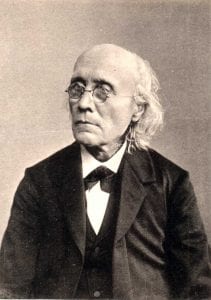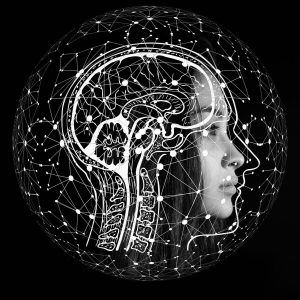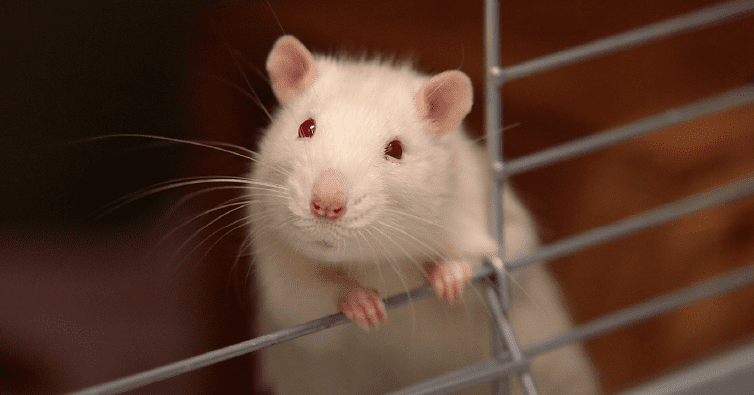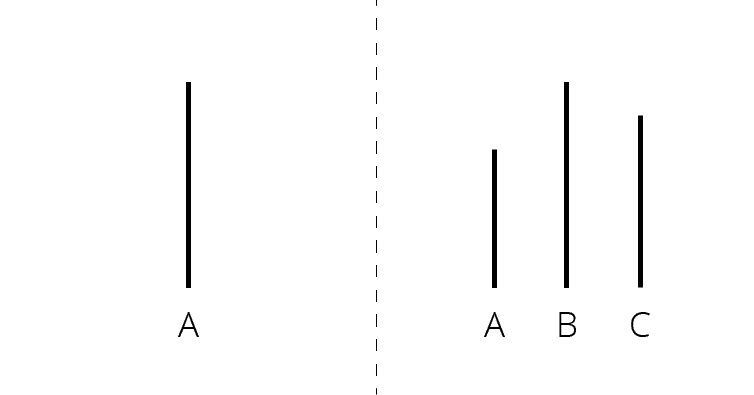Table of Contents
The mind is a complicated place. Fortunately, the scientific method is perfectly equipped to deal with complexity. If we put these two things together we have the field of experimental psychology, broadly defined as the scientific study of the mind. The word “experimental” in this context means that tests are administered to participants, outcomes are measured, and comparisons are made.
More formally, this means that a group of participants are exposed to a stimulus (or stimuli), and their behavior in response is recorded. This behavior is compared to some kind of control condition, which could be either a neutral stimulus, the absence of a stimulus, or against a control group (who maybe do nothing at all).
Experimental psychology is concerned with testing theories of human thoughts, feelings, actions, and beyond – any aspect of being human that involves the mind. This is a broad category that features many branches within it (e.g. behavioral psychology, cognitive psychology). Below, we will go through a brief history of experimental psychology, the aspects that characterize it, and outline research that has gone on to shape this field.
A Brief History of Experimental Psychology
As with anything, and perhaps particularly with scientific ideas, it’s difficult to pinpoint the exact moment in which a thought or approach was conceived. One of the best candidates with which to credit the emergence of experimental psychology with is Gustav Fechner who came to prominence in the 1830’s. After completing his Ph.D in biology at the University of Leipzig [1], and continuing his work as a professor, he made a significant breakthrough in the conception of mental states.
Scientists later wrote about Fechner’s breakthrough for understanding perception: “An increase in the intensity of a stimulus, Fechner argued, does not produce a one-to-one increase in the intensity of the sensation … For example, adding the sound of one bell to that of an already ringing bell produces a greater increase in sensation than adding one bell to 10 others already ringing. Therefore, the effects of stimulus intensities are not absolute but are relative to the amount of sensation that already exists.” [2]

This ultimately meant that mental perception is responsive to the material world – the mind doesn’t passively respond to a stimulus (if that was the case, there would be a linear relationship between the intensity of a stimulus and the actual perception of it), but is instead dynamically responsive to it. This conception ultimately shapes much of experimental psychology, and the grounding theory: that the response of the brain to the environment can be quantified.
Fechner went on to research within this area for many subsequent years, testing new ideas regarding human perception. Meanwhile, another German scientist working in Heidelberg to the West, began his work on the problem of multitasking, and created the next paradigm shift for experimental psychology. The scientist was Wilhem Wundt, who had followed the work of Gustav Fechner.
Wilhem Wundt is often credited with being “the father of experimental psychology” and is the founding point for many aspects of it. He began the first experimental psychology lab, scientific journal, and ultimately formalized the approach as a science. Wundt set in stone what Fechner had put on paper.
The next scientist to advance the field of experimental psychology was influenced directly by reading Fechner’s book “Elements of Psychophysics”. Hermann Ebbinghaus, once again a German scientist, carried out the first properly formalized research into memory and forgetting, by using long lists of (mostly) nonsense syllables (such as: “VAW”, “TEL”, “BOC”) and recording how long it took for people to forget them.
Experiments using this list, concerning learning and memory, would take up much of Ebbinghaus’ career, and help cement experimental psychology as a science. There are many other scientists’ whose contributions helped pave the way for the direction, approach, and success of experimental psychology (Hermann von Helmholtz, Ernst Weber, and Mary Whiton Calkins, to name just a few) – all played a part in creating the field as we know it today. The work that they did defined the field, providing it with characteristics that we’ll now go through below.
Interested in Human Behavior and Psychology?
Sign up to our newsletter to get the latest articles and research send to you

What Defines Experimental Psychology?
Defining any scientific field is in itself no exact science – there are inevitably aspects that will be missed. However, experimental psychology features at least three central components that define it: empiricism, falsifiability, and determinism. These features are central to experimental psychology but also many other fields within science.

Empiricism refers to the collection of data that can support or refute a theory. In opposition to purely theoretical reasoning, empiricism is concerned with observations that can be tested. It is based on the idea that all knowledge stems from observations that can be perceived, and data surrounding them can be collected to form experiments.
Falsifiability is a foundational aspect of all contemporary scientific work. Karl Popper, a 20th century philosopher, formalized this concept – that for any theory to be scientific there must be a way to falsify it. Otherwise, ludicrous, but unprovable claims could be made with equal weight as the most rigorously tested theories.
For example, the Theory of Relativity is scientific, for example, because it is possible that evidence could emerge to disprove it. This means that it can be tested. An example of an unfalsifiable argument is that the earth is younger than it appears, but that it was created to appear older than it is – any evidence against this is dismissed within the argument itself, rendering it impossible to falsify, and therefore untestable.
Determinism refers to the notion that any event has a cause before it. Applied to mental states, this means that the brain responds to stimuli, and that these responses can ultimately be predicted, given the correct data.
These aspects of experimental psychology run throughout the research carried out within this field. There are thousands of articles featuring research that have been carried out within this vein – below we will go through just a few of the most influential and well-cited studies that have shaped this field, and look to the future of experimental psychology.
Classic Studies in Experimental Psychology
Little Albert
One of the most notorious studies within experimental psychology was also one of the foundational pieces of research for behaviorism. Popularly known as the study of “Little Albert”, this experiment, carried out in 1920, focused on whether a baby could be made to fear a stimulus through conditioning (conditioning refers to the association of a response to a stimulus) [3].
The psychologist, John B. Watson, devised an experiment in which a baby was exposed to an unconditioned stimulus (in this case, a white rat) at the same time as a fear-inducing stimulus (the loud, sudden sound of a hammer hitting a metal bar). The repetition of this loud noise paired with the appearance of the white rat eventually led to the white rat becoming a conditioned stimulus – inducing the fear response even without the sound of the hammer.

While the study was clearly problematic, and wouldn’t (and shouldn’t!) clear any ethical boards today, it was hugely influential for its time, showing how human emotional responses can be shaped intentionally by conditioning – a feat only carried out with animals prior to this [4].
Watson, later referred to by a previous professor of his as a person “who thought too highly of himself and was more interested in his own ideas than in people” [5], was later revered and reviled in equal measure [2]. While his approach has since been rightly questioned, the study was a breakthrough for the conception of human behavior.
Asch’s Conformity Experiment
Three decades following Watson’s infamous experiment, beliefs were studied rather than behavior. Research carried out by Solomon Asch in 1951 showed how the influence of group pressure could make people say what they didn’t believe.
The goal was to examine how social pressures “induce individuals to resist or to yield to group pressures when the latter are perceived to be contrary to fact” [6]. Participant’s were introduced to a group of seven people in which, unbeknownst to them, all other individuals were actors hired by Asch. The task was introduced as a perceptual test, in which the length of lines was to be compared.

Sets of lines were shown to the group of participants – three on one card, one on another (as in the image above). The apparent task was to compare the three lines and say which was most like the single line in length. The answers were plainly obvious, and in one-on-one testing, participants got a correct answer over 99% of the time. Yet in this group setting, in which each actor, one after the other, incorrectly said an incorrect line out loud, the answers of the participants would change.
On average, around 38% of the answers the participants gave were incorrect – a huge jump from the less than 1% reported in non-group settings. The study was hugely influential for showing how our actions can be impacted by the environment we are placed in, particularly when it comes to social factors.
The Invisible Gorilla
If you don’t know this research from the title already, then it’s best experienced by watching the video below, and counting the number of ball passes.
The research of course has little to do with throwing a ball around, but more to do with the likelihood of not seeing the person in a gorilla costume who appears in the middle of the screen for eight seconds. The research, carried out in 1999, investigated how our attentional resources can impact how we perceive the world [7]. The term “inattentional blindness” refers to the effective blindness of our perceptions when our attention is engaged in another task.
The study tested how attentional processing is distributed, suggesting that objects that are more relevant to the task are more likely to be seen than objects which simply have close spatial proximity (very roughly – something expected is more likely to be seen even if it’s further away, whereas something unexpected is less likely to be seen even if it’s close).
The research not only showed the effect of our perceptions on our experience, but also has real-world implications. A replication of this study was done using eye tracking to record the visual search of radiologists who were instructed to look for nodules on one of several X-rays of lungs [8]. As the researchers state “A gorilla, 48 times the size of the average nodule, was inserted in the last case that was presented. Eighty-three percent of the radiologists did not see the gorilla.”
The original study, and research that followed since, has been crucial for showing how our expectations about the environment can shape our perceptions. Modern research has built upon each of the ideas and studies that have been carried out across almost 200 years.

iMotions Lab
Powering Human Insights
The complete research platform for psychology experiments
The Future of Experimental Psychology
The majority of this article has been concerned with what experimental psychology is, where it comes from, and what it has achieved so far. An inevitable follow-up question to this is – where is it going?
While predictions are difficult to make, there are at least indications. The best place to look is to experts in the field. Schultz and Schultz refer to modern psychology “as the science of behavior and mental processes instead of only behavior, a science seeking to explain overt behavior and its relationship to mental processes.” [2].
The Association for Psychological Science (APS) asked for forecasts from several prominent psychology researchers (original article available here), and received some of the following responses.

Lauri Nummenmaa (Assistant professor, Aalto University, Finland) predicts a similar path to Schultz and Schultz, stating that “a major aim of the future psychological science would involve re-establishing the link between the brain and behavior”. While Modupe Akinola (Assistant professor, Columbia Business School) hopes “that advancements in technology will allow for more unobtrusive ways of measuring bodily responses”.
Kristen Lindquist (Assistant professor of psychology, University of North Carolina School of Medicine) centers in on emotional responses, saying that “We are just beginning to understand how a person’s expectations, knowledge, and prior experiences shape his or her emotions. Emotions play a role in every moment of waking life from decisions to memories to feelings, so understanding emotions will help us to understand the mind more generally.”
Tal Yarkoni (Director, Psychoinformatics Lab, University of Texas at Austin) provides a forthright assessment of what the future of experimental psychology has in store: “psychological scientists will have better data, better tools, and more reliable methods of aggregation and evaluation”.
Whatever the future of experimental psychology looks like, we at iMotions aim to keep providing all the tools needed to carry out rigorous experimental psychology research.
I hope you’ve enjoyed reading this introduction to experimental psychology. If you’d like to get an even closer look at the background and research within this field, then download our free guide to human behavior below.
Free 52-page Human Behavior Guide
For Beginners and Intermediates
- Get accessible and comprehensive walkthrough
- Valuable human behavior research insight
- Learn how to take your research to the next level

References
[1] Shiraev, E. (2015). A history of psychology. Thousand Oaks, CA: SAGE Publications.
[2] Schultz, D. P., & Schultz, S. E. (2011). A History of Modern Psychology. Cengage, Canada.
[3] Watson, J.B.; Rayner, R. (1920). “Conditioned emotional reactions”. Journal of Experimental Psychology. 3 (1): 1–14. doi:10.1037/h0069608.
[4] Pavlov, I. P. (1928). Lectures on conditioned reflexes. (Translated by W.H. Gantt) London: Allen and Unwin.
[5] Brewer, C. L. (1991). Perspectives on John B. Watson. In G. A. Kimble, M. Wertheimer, & C. White (Eds.), Portraits of pioneers in psychology (pp. 171–186). Washington, DC: American Psychological Association.
[6] Asch, S.E. (1951). Effects of group pressure on the modification and distortion of judgments. In H. Guetzkow (Ed.), Groups, leadership and men(pp. 177–190). Pittsburgh, PA:Carnegie Press.
[7] Simons, D. and Chabris, C. (1999). Gorillas in our midst: sustained inattentional blindness for dynamic events. Perception, 28(9), pp.1059-1074.
[8] Drew, T., Võ, M. L-H., Wolfe, J. M. (2013). The invisible gorilla strikes again: sustained inattentional blindness in expert observers. Psychological Science, 24(9):1848–1853. doi: 10.1177/0956797613479386.











